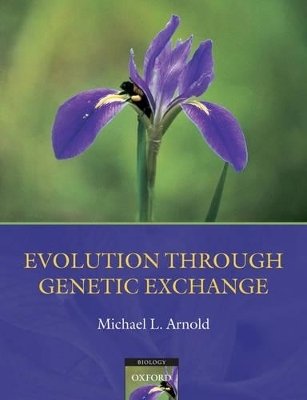
Evolution through Genetic Exchange
Oxford University Press (Verlag)
978-0-19-922903-1 (ISBN)
Even before the publication of Darwin's Origin of Species, the perception of evolutionary change has been a tree-like pattern of diversification - with divergent branches spreading further and further from the trunk. In the only illustration of Darwin's treatise, branches large and small never reconnect. However, it is now evident that this view does not adequately encompass the richness of evolutionary pattern and process. Instead, the evolution of species from microbes to mammals builds like a web that crosses and re-crosses through genetic exchange, even as it grows outward from a point of origin. Some of the avenues for genetic exchange, for example introgression through sexual recombination versus lateral gene transfer mediated by transposable elements, are based on definably different molecular mechanisms. However, even such widely different genetic processes may result in similar effects on adaptations (either new or transferred), genome evolution, population genetics, and the evolutionary/ecological trajectory of organisms. For example, the evolution of novel adaptations (resulting from lateral gene transfer) leading to the flea-borne, deadly, causative agent of plague from a rarely-fatal, orally-transmitted, bacterial species is quite similar to the adaptations accrued from natural hybridization between annual sunflower species resulting in the formation of several new species. Thus, more and more data indicate that evolution has resulted in lineages consisting of mosaics of genes derived from different ancestors. It is therefore becoming increasingly clear that the tree is an inadequate metaphor of evolutionary change. In this book, Arnold promotes the 'web-of-life' metaphor as a more appropriate representation of evolutionary change in all lifeforms.
Michael Arnold is an evolutionary biologist with over 90 scientific articles to his credit. He is best known for the work produced by his group on the evolutionary role of natural hybridization - particularly relating to the plant group known as the Louisiana Irises. However, he has collaborated on evolutionary biology research projects involving organisms as diverse as bats, Columbines, fruit flies and fungi. He has published one other book, entitled Natural Hybridization and Evolution (Oxford University Press, 1997). Mike is also a published outdoor writer whose stories and photographs have appeared in such places as Safari Magazine. Mike and his wife Frances have two adult children, Brian and Jenny.
Preface ; 1. History of Investigations ; 2. The Role of Species Concepts ; 3. Testing the Hypothesis ; 4. Barriers to Gene Flow ; 5. Hybrid Fitness ; 6. Gene Duplication ; 7. Origin of New Evolutionary Lineages ; 8. Implications For Endangered Taxa ; 9. Humans and Associated Lineages ; 10. Emergent Properties ; Glossary ; Reference ; Index
| Erscheint lt. Verlag | 11.10.2007 |
|---|---|
| Zusatzinfo | 6 colour plates, numerous line drawings, 3 maps, 3 tables |
| Verlagsort | Oxford |
| Sprache | englisch |
| Maße | 188 x 245 mm |
| Gewicht | 551 g |
| Themenwelt | Naturwissenschaften ► Biologie ► Evolution |
| Naturwissenschaften ► Biologie ► Genetik / Molekularbiologie | |
| Naturwissenschaften ► Biologie ► Mikrobiologie / Immunologie | |
| Naturwissenschaften ► Biologie ► Zoologie | |
| ISBN-10 | 0-19-922903-1 / 0199229031 |
| ISBN-13 | 978-0-19-922903-1 / 9780199229031 |
| Zustand | Neuware |
| Haben Sie eine Frage zum Produkt? |
aus dem Bereich


